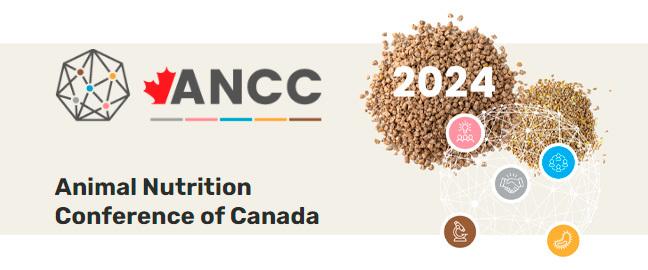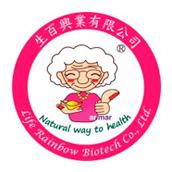Explore all the information on
Swine gut health
Welcome to the page about Swine gut health of Engormix; a source of knowledge on Swine gut health.
Additives are part of the strategies for adding value to food, and their interest, in the current context of raw material prices, is even more evident. Nevertheless, there is a tendency to simplify their action to stick to the primary logic of their nature and easily generate an economic advantage. In doing so, we are likely to limit ourselves by failing to fully consider the scope of their work. In the case of the increasingly popular proteases, this involves a "simple" recovery of the...
Comments : 1
Recommendations: 0
Introduction: Saccharomyces cerevisiae boulardii is a probiotic yeast with an established history of use for the prevention and/or treatment of diarrhoea and chronic inflammatory disease in human medicine. More recently, S. boulardii has also been used in the pig industry to increase performance and reduce pathogen burden during vulnerable early life stages such as post-farrowing and weaning. Recent advances in DNA sequencing technology are now able to understand the host...
Comments : 0
Recommendations: 0
Recommended events
May 14, 2024
Canada - Manitoba - Winnipeg
Introduction: Appropriate nutrient digestibility is a key to animal health and growth performance, particularly in post-weaning pigs. Compounds with anti-inflammatory or anti-oxidative properties have potential to support gut integrity and growth performance when included in diets for pigs. Isoquinoline alkaloids (IQ) derived from the Papaveraceae plant Macleaya cordata exert anti-inflammatory effects, whereas naringin (NRG), a bitter-tasting flavanone glycoside from...
Comments : 0
Recommendations: 0
Introduction: It is well known that stomach barrier (acidity) acts against diverse pathogenic agents. This function is particularly influenced by particle size distribution in the diet. Diarrhoea causing E. coli is an agent of relevance in today’s pig production that can lead to weight gains up to high losses. An experimental study was conducted to evaluate the ability of a specific pathogenic E. coli to survive stomach passage, in vivo and in vitro...
Comments : 0
Recommendations: 0
Introduction: The effects of the oral supplementation of probiotics on the performance (weight gain and feed intake) and intestinal histo-morphology of the duodenal, jejunal, and ileal mucosa (villus height, width, and perimeter and crypt depth) of two different genetic lines (purebred Large White or crossbred Large White x Landrace) of suckling piglets. Materials and Methods: The suckling piglets were evaluated between 2 and 19 days of age. In total, 276...
Comments : 0
Recommendations: 0
Introduction: Weaning process causes a significant biological stress to piglets which lead to a detrimental effect on feed intake, growth rate, intestinal morphology and immune system. A mixture of quaternary benzophenanthridine alkaloids and protopine alkaloids (QBA+PA) possess antimicrobial and anti-inflammatory effects. They also are known to improve endogenous digestive enzyme secretion, activate of the immune system and improve protein retention of farm...
Comments : 0
Recommendations: 0
Butyric acid is a short-chain fatty acid (SCFA) that is produced naturally by fermentation of fiber in the lower gastrointestinal tract (GI). Butyric acid has known benefits such as providing energy to colonocytes, intestinal barrier function, apoptosis regulation, control cytokine production, mucus synthesis, and intestinal cell proliferation, differentiation and maturation. Exogenous supplementation of butyric acid was initially developed by making a salt derivative, with either sodium or...
Comments : 0
Recommendations: 0
Despite environmental and public health (bacterial resistance) issues, supranutritional levels of zinc oxide (ZnO) are still commonly used to prevent diarrhea in post-weaning piglets. In Canada, these levels represent more than eight-fold the CFIA proposed maximum levels at 300 mg/kg. The limited knowledge of their consequences for the metabolism of trace minerals has hampered the replacement of this strategy without compromising piglet health. Our laboratory has performed a series of...
Comments : 0
Recommendations: 0
Mycotoxins are secondary metabolites produced by fungi, the most abundant of which belong to the genera Aspergillus, Penicillium, and Fusarium . The conditions required for fungal development and the production of mycotoxins vary strongly with the substrate on which the fungal species develop.Because mycotoxins are mainly present in food and feed, the gut is the first target for mycotoxin toxicity, but it is also the site of the absorption of mycotoxins that leads to...
Comments : 0
Recommendations: 0
.jpg&w=3840&q=75)
The Specialty Nutrition portfolio for monogastrics overseen by Dr. Anita Menconi, Regional Business Director of Specialty Nutrition, Americas at Evonik, comprises advanced nutritional solutions tailored specifically for monogastric animals. ...
Comments : 0
Recommendations: 0
Basic Role of Feed Formulation Feed formulation is a process by which our knowledge of the nutrition of the animal can be translated into feeding programs which achieve our production objectives. These objectives typically include optimizing growth performance and producing a final carcass that can be converted into safe, healthy and appealing consumer meat products. This must be done in a profitable manner that concurrently contributes to environmental sustainability and animal...
Comments : 3
Recommendations: 3
Young Dal Jang (University of Wisconsin–River Falls) This study was conducted to demonstrate the effects of second iron injection before weaning and iron levels in nursery diets on growth performance, hematological parameters, and fecal microbiome of pigs. A total of 70 newborn pigs from 7 sows were allotted to 4 treatments within litter, housed in farrowing crate without creep feed, and received the first dose (200 mg iron) at 2 to 3 d of age....
Comments : 1
Recommendations: 0
.jpg&w=3840&q=75)
Mike Kogut, Chair of the Organizing Committee, talks about the meeting's most interesting discussions and announces the dates for the next edition....
Comments : 2
Recommendations: 3
INTRODUCTION Livestock monogastric species, including swine and poultry, are the main sources of meat; therefore, they are, at the same time, the main livestock species reared under intensive conditions (Eurostat, 2022). The pressure to increasingly optimize breeding resulted in antimicrobials often being used for both prophylactic and metaphylactic purposes to counteract the diseases of these animals or as growth promoters. It is currently commonly recognized that the misuse of...
Comments : 1
Recommendations: 0
Andrea Bonetti (University of Bologna) At weaning, pigs develop significant stress with long-lasting effects on their performance and health. Botanicals include a wide variety of bioactive molecules able to control inflammation and oxidation. The aim of the study was to investigate the ability of a microencapsulated thymol-based blend of botanicals (BOT) to support piglets’ performance and health during an LPS inflammatory challenge. To examine...
Comments : 0
Recommendations: 0
Yihang Li (University of Delaware) Developmental plasticity during the prenatal and early postnatal periods allows animals to adapt quickly to their environment and efficiently construct organ systems crucial for survival. These adaptations, which may be irreversible later in life, can lead animals to develop beneficial survival strategies or predispose them to chronic diseases. The gastrointestinal (GI) tract is a highly adaptive organ, contending...
Comments : 0
Recommendations: 0
Safglucan® – Mitigating the negative impact of Lawsonia intracellularis on pig performance and intestinal wellbeing. Phileo by Lesaffre has shown that feeding its yeast (1.3)(1.6) beta-glucan, Safglucan®, can help pigs cope better with the negative effect of enteric disorders caused by Lawsonia intracellularis. This is a new (patent pending) application for Safglucan® to help the pork industry achieve profitable production while also reducing antimicrobial...
Comments : 0
Recommendations: 0
.jpg&w=3840&q=75)
Theresia Lavergne (Natural Biologics) comments on her research on the antiviral properties of medium-chain monoglycerides in pigs with PRRS challenge, as well as future tests on poultry viruses, during the 11th Symposium on Gut Health in Production of Food Animals in St. Louis, USA....
Comments : 0
Recommendations: 0
.jpg&w=3840&q=75)
Brian Aldridge (University of Illinois) shares insights on the environmental, nutritional, and maternal factors that affect the microbiome of different animals, during the 11th Symposium on Gut Health in Production of Food Animals in St. Louis, USA....
Comments : 0
Recommendations: 1
Caroline González-Vega (Cargill) This study was conducted to investigate the effects of medium-chain fatty acid blend (MCFA) and a phytogenic feed additive (Fresta® Protect, Delacon, Austria) on growth performance and gut health of Escherichia coli (ETEC)-challenged pigs. A total of 200 weaned pigs with initial body weight of 5.52 ± 0.17 kg were allotted to 40 pens (5 pigs/pen) blocked by BW and randomly assigned to 5 treatments: (1)...
Comments : 0
Recommendations: 0


























